You may have noticed me mentioning this word (roucou) when I posted the cornmeal pastelle recipe a few weeks ago. So I thought it would be nice to do a post on this natural red colouring , and how it is made.
A little About Roucou
Roucou or Oucou, as some people call it, comes from the fruit of the Achiote (Bixa orellana) tree. Here in Trinidad we have two types, the usual red that most people know of and a green variety that doesn't get red but dries after a while. So if you are waiting for this kind to get red or ripe you will be waiting in vain haha!!!
This natural dye has long been used by Amerindians as a body paint. Perhaps this is a remnant of our Amerindian heritage, mainly the Caribs, in our country who have been here long before Columbus, supposedly discovered Trinidad and Tobago. But just as a side note, could you discover or rediscover a place....and find people living there before you discovered it?
Hmmmm Just imagine that is what they taught us as "Caribbean History". Anyhow where were we... Yes! roucou.
Achiote pod showing the seeds.
Gather some of the fruit and scrape out the seeds into a bowl using a spoon.
Add some water and allow to soak for a few hours or overnight if you have time.
After soaking, strain the water in a separate bowl. Add a little water to the seeds and rub the seeds between your hands to get some more of the dye out and strain again. This could be done about three times.
Bring the roucou to a boil and add salt to taste.
Not too much though. Set aside to cool.
When cool pour in bottles and store.
Tip:
After rubbing the seeds rigoroursly between the hands, your hands will get the red dye, so for easy cleanup you can use use bleach.
Roucou could be refridgerated or not; it is just personal preference since it doesn't really spoil.
Well that's it for a long awaited post. Until then bye!
Don't forget to leave your comments on roucou in the comment box below.
Roucou
Ingredients
- Roucou fruit Achiote
Instructions
- Step 1
- Gather some of the fruit (Achiote, Bixa orellana) and scrape out the seeds into a bowl using a spoon. Add some water and allow to soak for a few hours or overnight if you have time.
- After soaking, strain the water in a separate bowl. Add a little water to the seeds and rub the seeds between your hands to get some more of the dye out and strain again. This could be done about three times.
- Bring the roucou to a boil and add salt to taste. Not too much though. Set aside to cool. When cool pour in bottles and store.



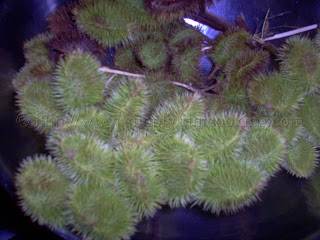
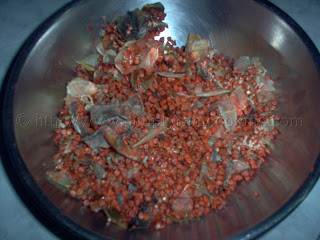

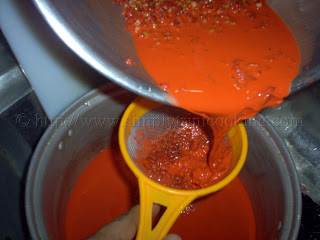
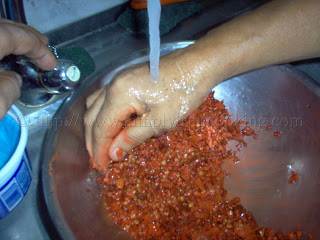
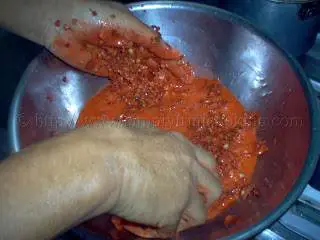
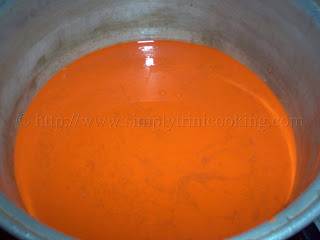
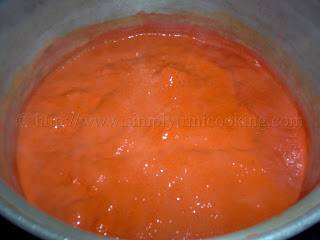
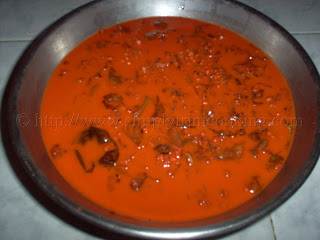







islandgal246
Thank you for this information I am sharing it with many blogging friends around the world. In guadeloupe they use it in a crayfish stew.
Voila
Love this site. Tried this recipe and the sauce came out great. A helpful tool for clean up that is not as harsh as bleach is baking soda or any cleaning agent with sodium bicarbonate as its active ingredient. Everything cleaned of nicely. I would also suggest using gloves to reduce the reddening of the hands. Hope this helps. Btw, the new look of this blog is really refreshing.
Anonymous
I simply wanted to thank you for the amazing blog you have designed here. It truly is full of ideas for those who are genuinely interested in Trini Cooking and Culture.
Henry
Haha, i did a Google search and this link was in the top 5 and lead me right back to here. So no need to answer me on last comment lol.
Henry
Very much enjoyed learning about this and that it came from the Achiote Plant. I actually enjoy learning new things. Yet having left my Island of St.Kitts so young as a kid I've realized there is lots that I have forgotten and lots of things that I don't know about much of the native plants. Great many Plants, Fruits, Herbs wildly populate the island as well plants brought to the island by the Caribs and Europeans dating all the way back to the Caribs who had a prominent existence on St.Kitts and during the Colonial British and French Wars over the Island known back then as the "Mother Colony".
So its a bit sad that I don't know much of my local plant vegetation that are used and can be used in cuisines. The Caribs used to use this plant for dyes and paint. And though I can't quite recall ever seeing or noticing this Achiote Plant used in any dishes growing up as a kid don't mean its not used. But this plant grows on my Island. We had a local clothing industry that used allot of local made dyes in making colorful clothing of the island. I can only guess this might have been used. I just never really knew other than dyes what else it was good for. But now I know.
Living in the U.S. I don't think i'd be that lucky to find that many pods of the plant to make the Roucou. But hey at least i know just in case i do what it can be used for. Maybe i find it in a bottle the finished product.
Trae
Hi I loved this post. I've done a little research on this plant. it seems that the achiote plant was used by indigenous peoples of the Americas mostly for body adornment and possibly medicinal. It appears that it's use for food came during the transfer of knowledge between Indigenous and African peoples early in Mordern Caribbean history. The achiote was (and still is) a replacement for palm oil that many different African people were accustomed to. Palm oil was not only a flavoring but also has the same affect on coloring food cooked in it a yellow color. Achiote is often used to color lard or oil yellow in food preparations. Often these foods are associated with African peoples like pastels for instance.
clara cudjoe-mathison
Just followed your method of making browning for my black cake and is goodbye to browning from the grocery. Am on point with my browning now.
SUE
Hi .. I recently bought a bottle of Roucou from our Farmers market and is using it for the first time. Do it supposed to have such a pungent scent?. It's a very unpleasant scent and was wondering if that's normal?
Felix
Roucou doesn't have much of a smell when made properly. Throw that bottle of roucou away.
Frances Pacheco
This method was passed down to us from our ancestors. We cook with this even to day. It gives our food a special taste. I remember we had a tree in our yard. My grandmother did not cook without roucou. Anyhow you pronounce it whether you say roucou or oucou you could be right. Remember back in the day people spoke patois and then there were different types of patois. A pity we were never taught the patois. Our parents only spoke patois when they did not want you to know what was being said.
Felix
That is so true Frances...The only time my parents spoke patois was when they wanted to talk people business and didn't want us to know. But that ended in time when my sisters learnt French in school and they started to figure out what they were saying lol 😀
Marco
I know it as anatto from Venezuela. Very commonly used to make Christmas dishes.
Olivia Roget
Great Post but besides it being used as paint for the amerindians there was no others uses for roucou? I googled this to see if it was used in curry.
Felix
Again I can only make an educated guess. Since we use it in our cooking as well maybe that's where we got the traditions being handed down. It's lost in time and we would never know.
Shelly
Actually not true, it does have a earthy woodsy smell to it,especially if it is made strong, I say this from vast experience, my family has been making this for over 80 years, we grow it ,make it and sell it, it can last for years when salt is added to the making process, just keep in a cool dark place.
laurence
knowledge well shered.
Meressa
I can get the dried seeds in the store. Can I use them to make roucou or only the fresh seeds? I am so curious about this I now want to plant my own tree.